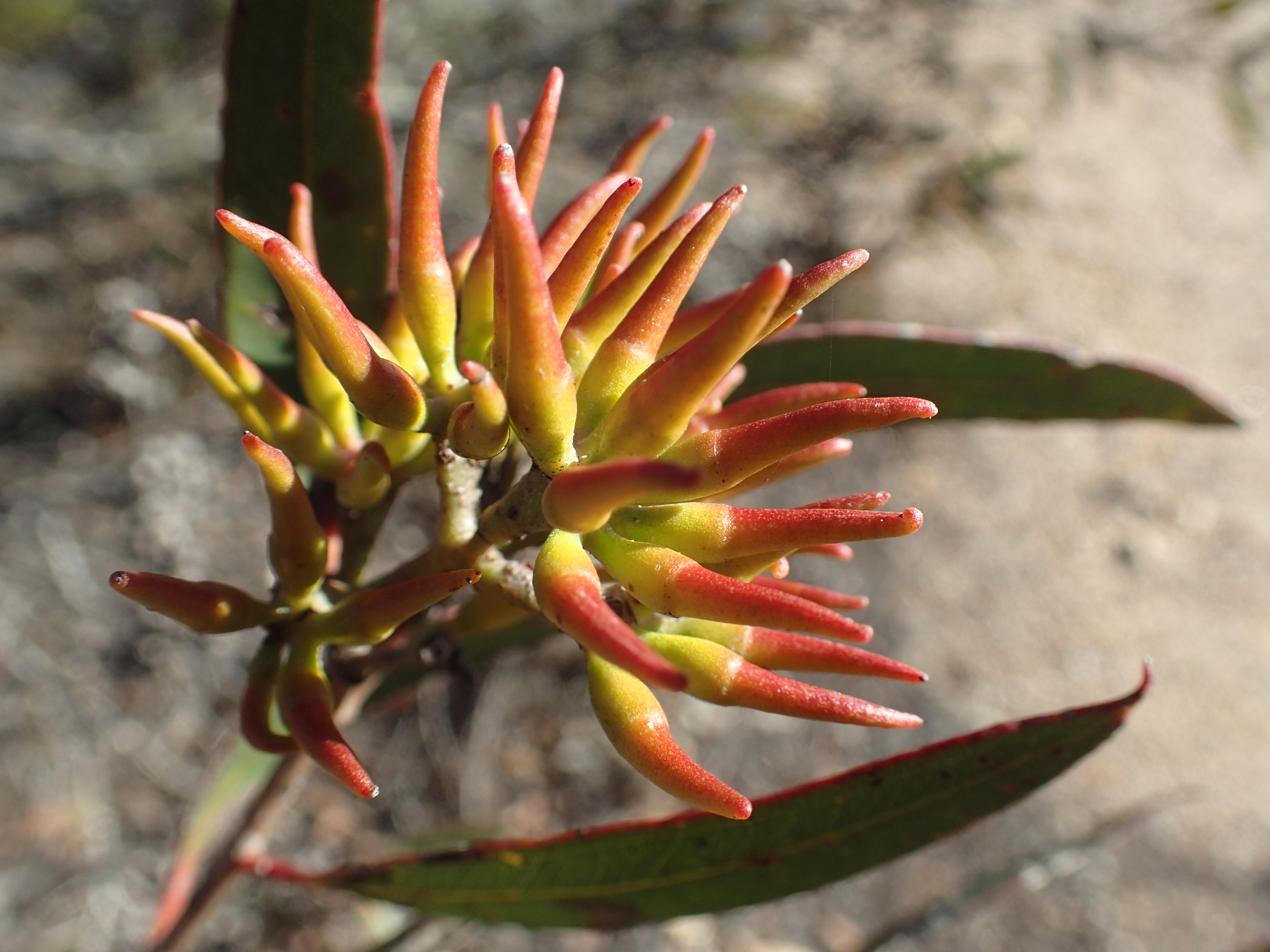Eucalyptus redunca on:
[Wikipedia]
[Google]
[Amazon]


 ''Eucalyptus redunca'', commonly known as black marlock, is a species of mallee or a shrub that is
''Eucalyptus redunca'', commonly known as black marlock, is a species of mallee or a shrub that is


 ''Eucalyptus redunca'', commonly known as black marlock, is a species of mallee or a shrub that is
''Eucalyptus redunca'', commonly known as black marlock, is a species of mallee or a shrub that is endemic
Endemism is the state of a species being found in a single defined geographic location, such as an island, state, nation, country or other defined zone; organisms that are indigenous to a place are not endemic to it if they are also found elsew ...
to Western Australia. It has smooth bark, lance-shaped adult leaves, flower buds in groups of between nine and fifteen, lemon-coloured flowers and barrel-shaped fruit.
Description
''Eucalyptus redunca'' is a mallee that typically grows to a height of and forms a lignotuber. It has grey and pale brown bark that is shed in short ribbons. The adult leaves are narrow-lance-shaped to lance-shaped, long and wide tapering to a petiole long. The flower buds are arranged in leafaxil
A leaf ( : leaves) is any of the principal appendages of a vascular plant stem, usually borne laterally aboveground and specialized for photosynthesis. Leaves are collectively called foliage, as in "autumn foliage", while the leaves, st ...
s in groups of between nine and fifteen on an unbranched peduncle long, the individual buds on pedicels
In botany, a pedicel is a stem that attaches a single flower to the inflorescence. Such inflorescences are described as ''pedicellate''.
Description
Pedicel refers to a structure connecting a single flower to its inflorescence. In the absenc ...
long. Mature buds are an elongated spindle shape, long and wide with a conical to horn-shaped operculum that is two or three times as long as the floral cup
In angiosperms, a hypanthium or floral cup is a structure where basal portions of the calyx, the corolla, and the stamens form a cup-shaped tube. It is sometimes called a floral tube, a term that is also used for corolla tube and calyx tube. It ...
. Flowering occurs from July to October or November and the flowers are lemon-coloured. The fruit is a woody, barrel-shaped capsule long and wide with the valves near rim level.
Taxonomy and naming
''Eucalyptus redunca'' was first formally described in 1844 by Johannes Conrad Schauer in 1844 in Johann Georg Christian Lehmann's book ''Plantae Preissianae
''Plantae preissianae sive enumeratio plantarum quas in australasia occidentali et meridionali-occidentali annis 1838-1841 collegit Ludovicus Preiss'', more commonly known as ''Plantae preissianae'', is a book written by Johann Georg Christian Leh ...
''. The specific epithet
In taxonomy, binomial nomenclature ("two-term naming system"), also called nomenclature ("two-name naming system") or binary nomenclature, is a formal system of naming species of living things by giving each a name composed of two parts, bot ...
(''redunca'') is from the Latin
Latin (, or , ) is a classical language belonging to the Italic branch of the Indo-European languages. Latin was originally a dialect spoken in the lower Tiber area (then known as Latium) around present-day Rome, but through the power of the ...
word ''reduncus'' meaning bent backwards, referring to the tip of the operculum that is sometimes bent when young.
Distribution
Black marlock is found on undulating, low ridges mostly along the south coast between Cape Riche and the Fitzgerald River National Park, and inland as far asRavensthorpe Ravensthorpe may refer to any of the following places.
England
*Ravensthorpe, Dewsbury in West Yorkshire
**Ravensthorpe railway station, Dewsbury
*Ravensthorpe, Northamptonshire
*Ravensthorpe, Peterborough in Cambridgeshire
*Ravensthorpe, an histor ...
. It grows in shrubland and open woodland in sand-clay soils often over laterite
Laterite is both a soil and a rock type rich in iron and aluminium and is commonly considered to have formed in hot and wet tropical areas. Nearly all laterites are of rusty-red coloration, because of high iron oxide content. They develop by ...
.
The species is associated with the western mallee subgroup which is characterised by several eucalypts including '' E. oleosa'', '' E. moderata'', '' E. incrassata'', '' E. foecunda'', '' E. eremophila'' and '' E. uncinata''. The understorey is predominantly shrubby with species of ''Melaleuca
''Melaleuca'' () is a genus of nearly 300 species of plants in the myrtle family, Myrtaceae, commonly known as paperbarks, honey-myrtles or tea-trees (although the last name is also applied to species of '' Leptospermum''). They range in size ...
'' and ''Acacia
''Acacia'', commonly known as the wattles or acacias, is a large genus of shrubs and trees in the subfamily Mimosoideae of the pea family Fabaceae. Initially, it comprised a group of plant species native to Africa and Australasia. The genus na ...
'' along with the occasional '' Triodia''.
Conservation status
This mallee is classified as "not threatened" by the Western Australian GovernmentDepartment of Parks and Wildlife
The Department of Parks and Wildlife (DPaW) was the department of the Government of Western Australia responsible for managing lands described in the ''Conservation and Land Management Act 1984'' and implementing the state's conservation and e ...
.
See also
* List of ''Eucalyptus'' speciesReferences
{{Taxonbar, from=Q5405690 redunca Endemic flora of Southwest Australia Mallees (habit) Myrtales of Australia Eucalypts of Western Australia Plants described in 1844 Taxa named by Johannes Conrad Schauer